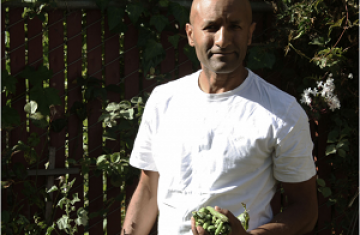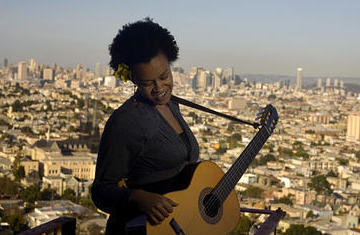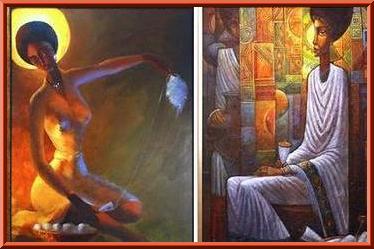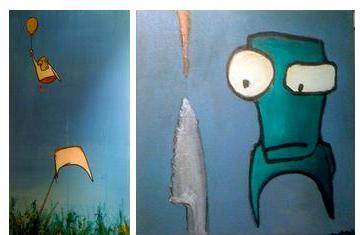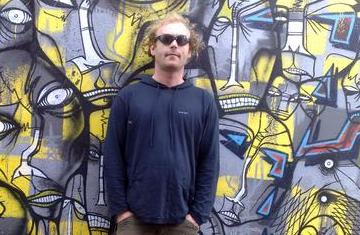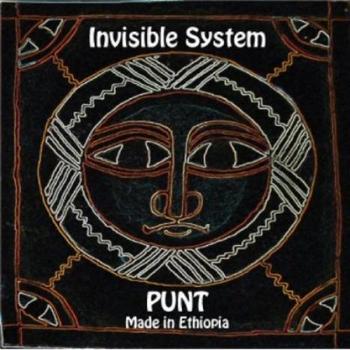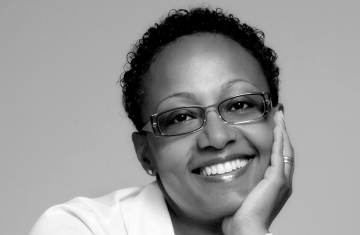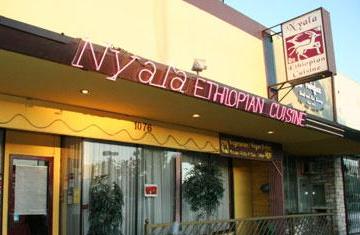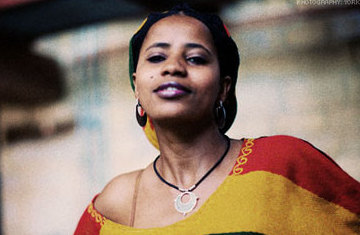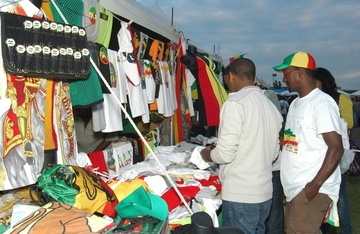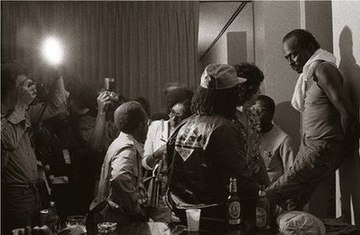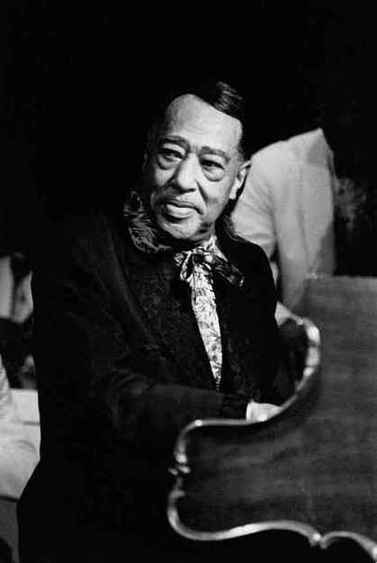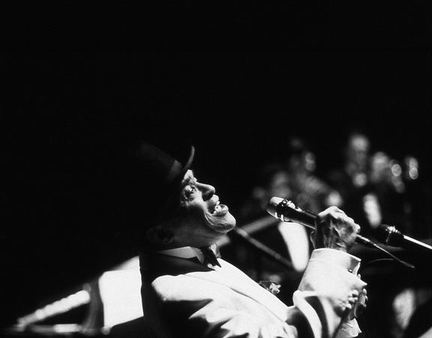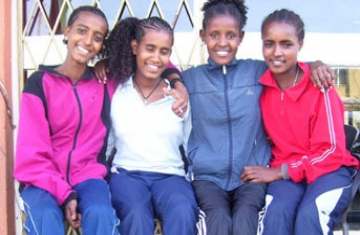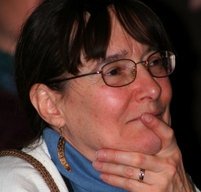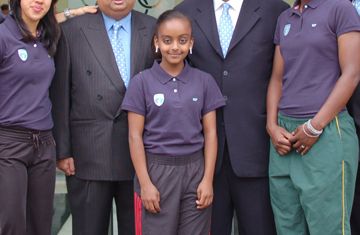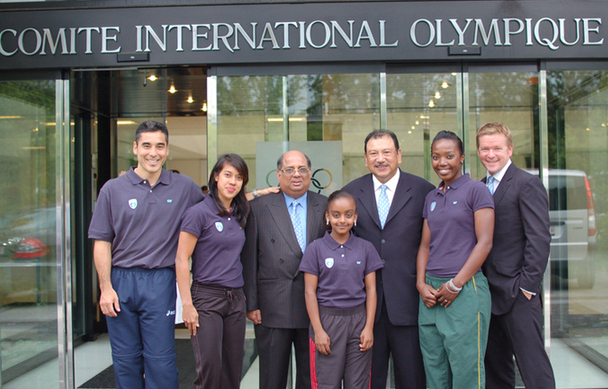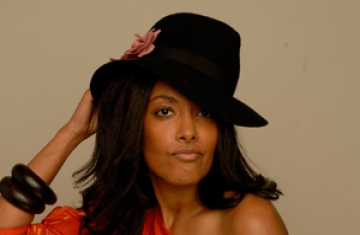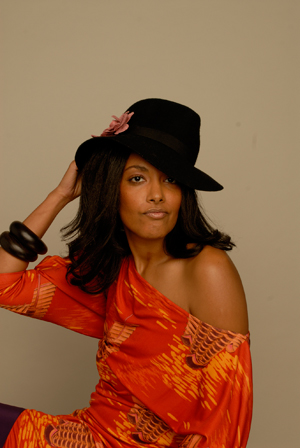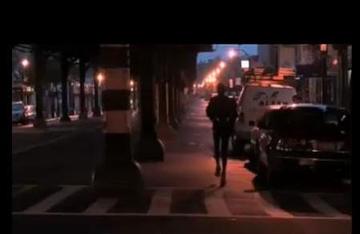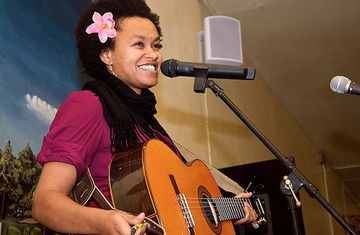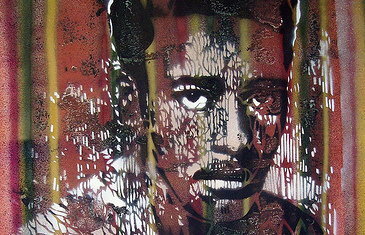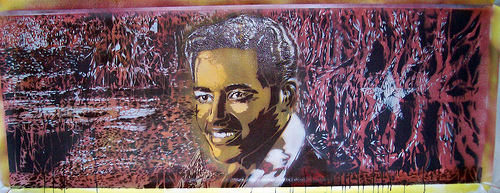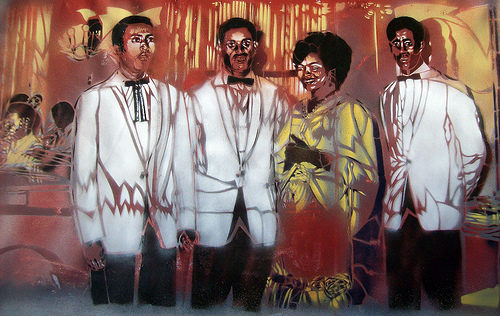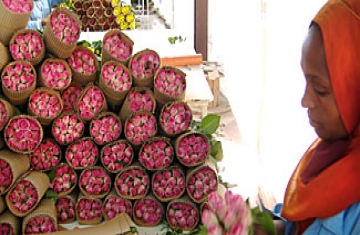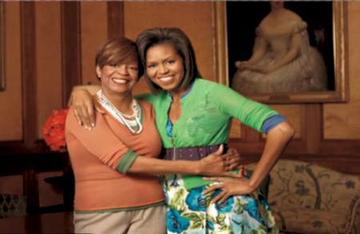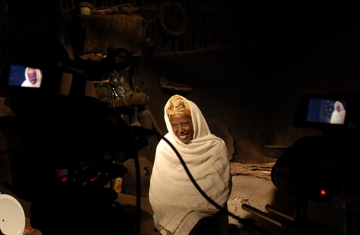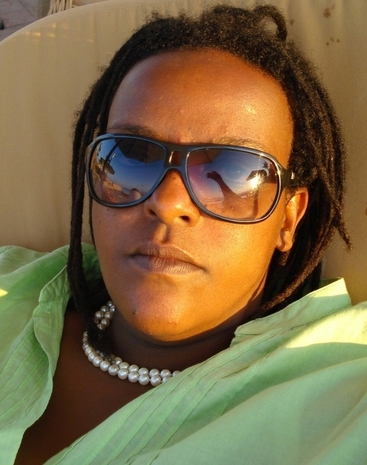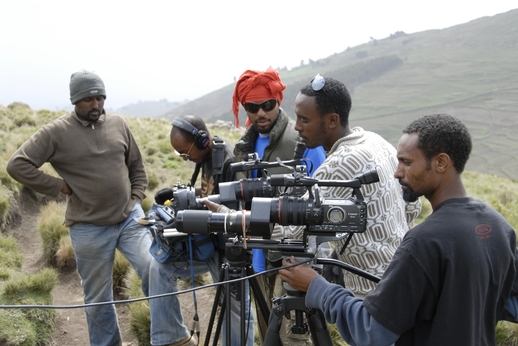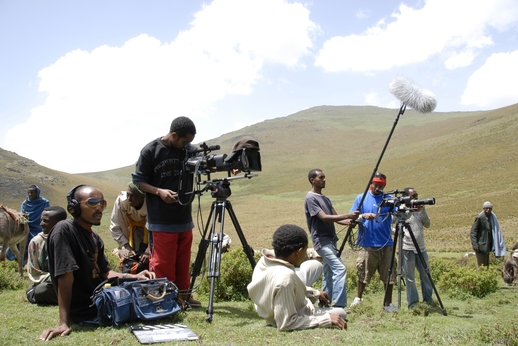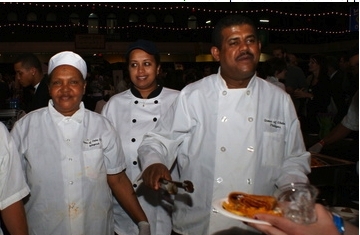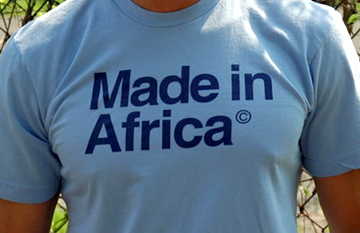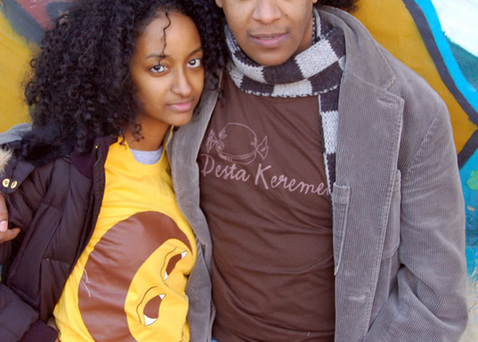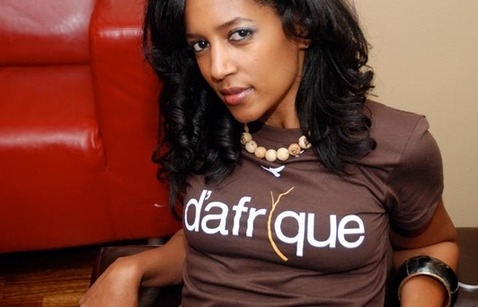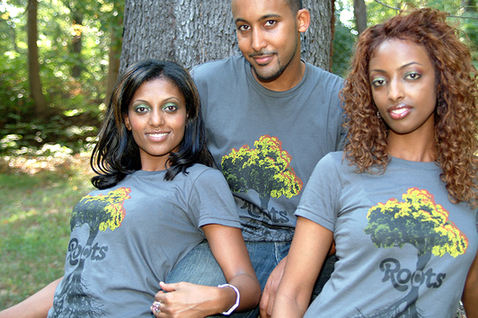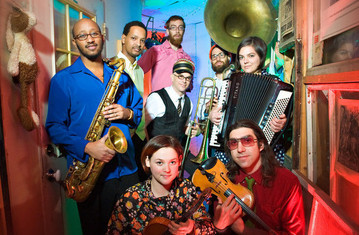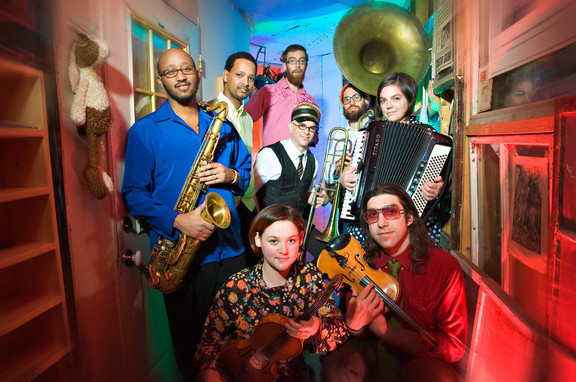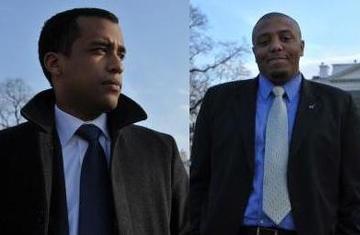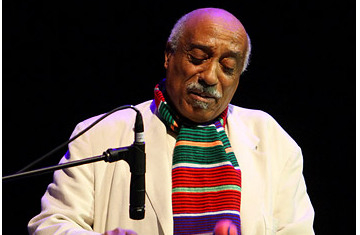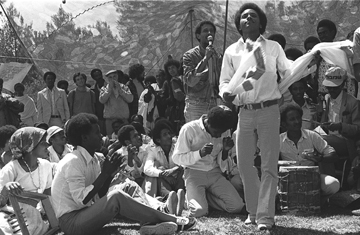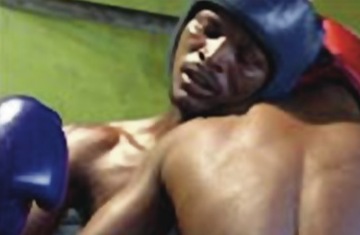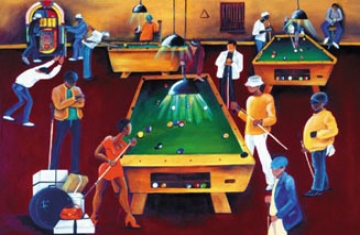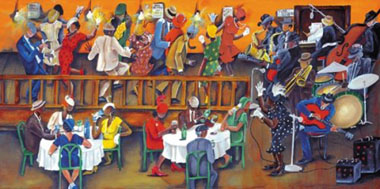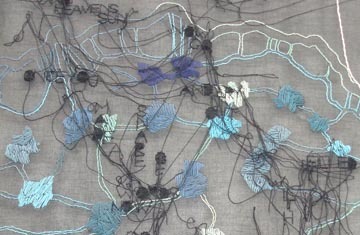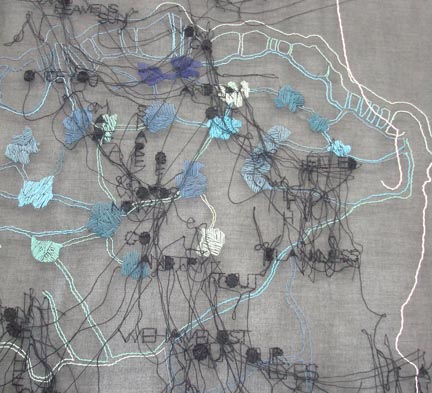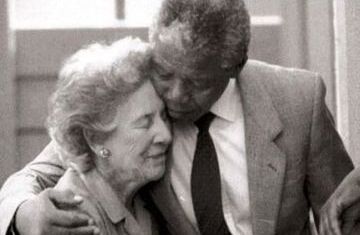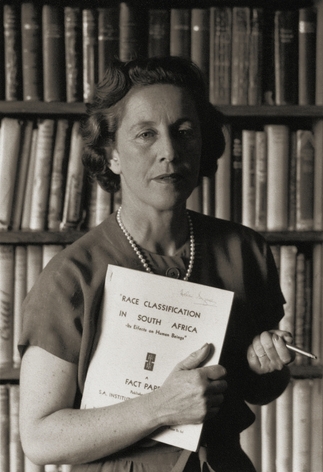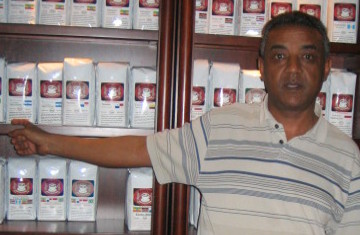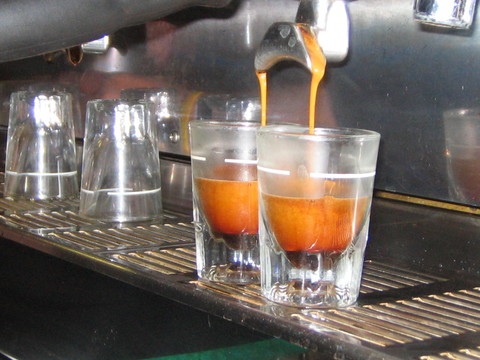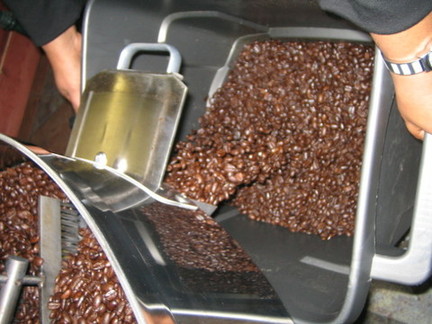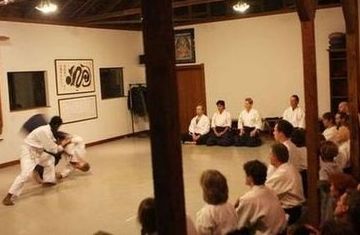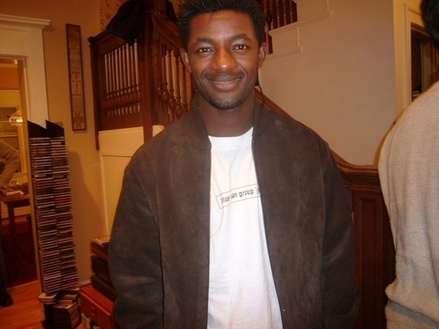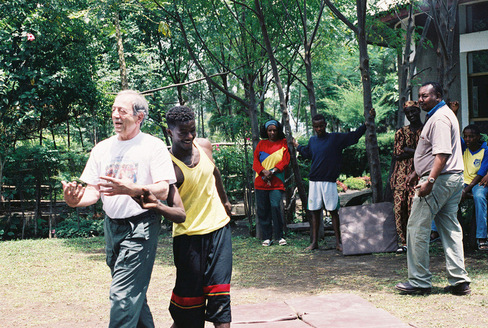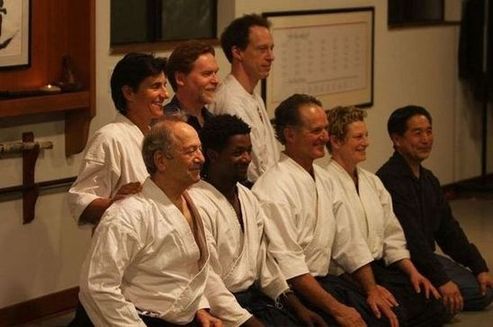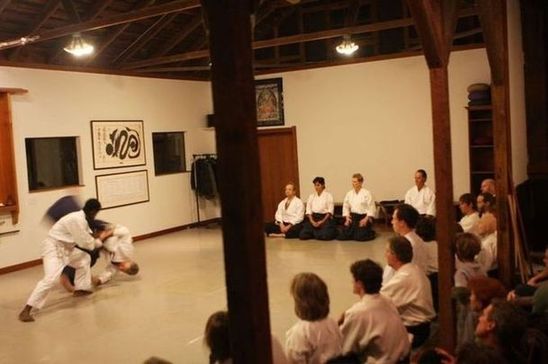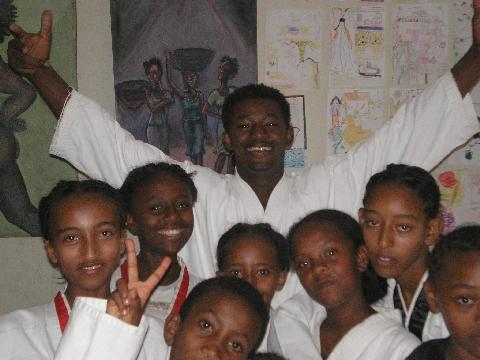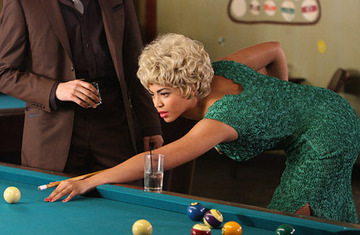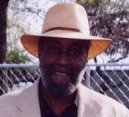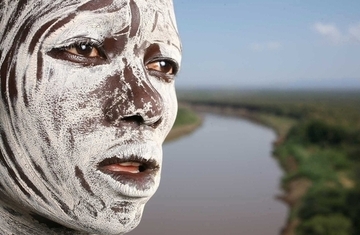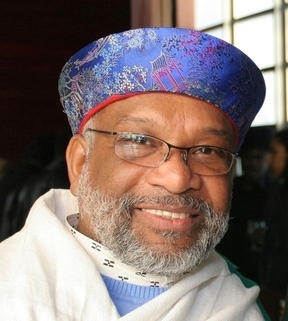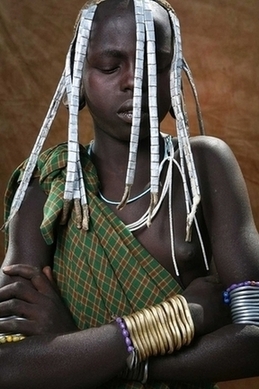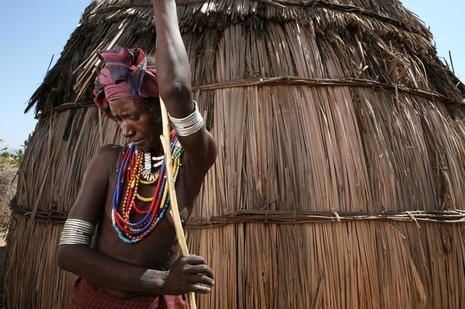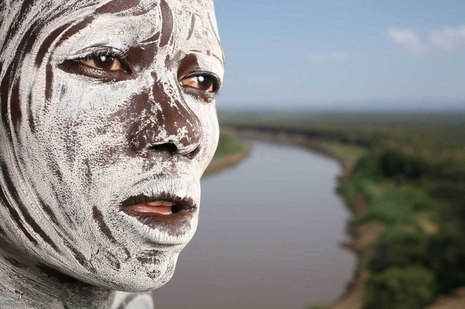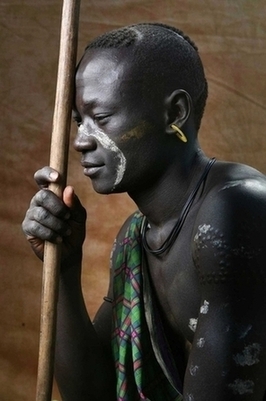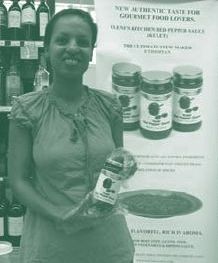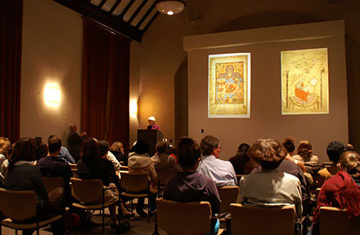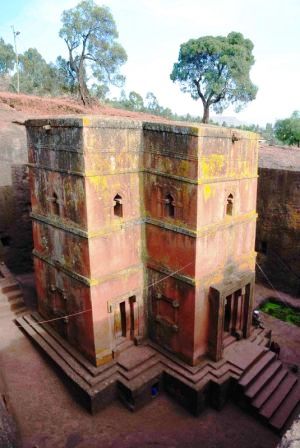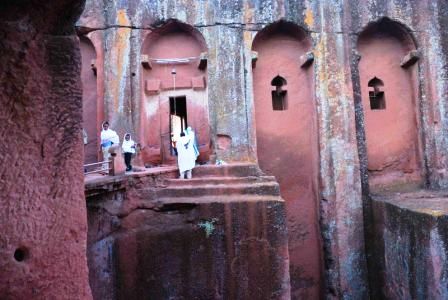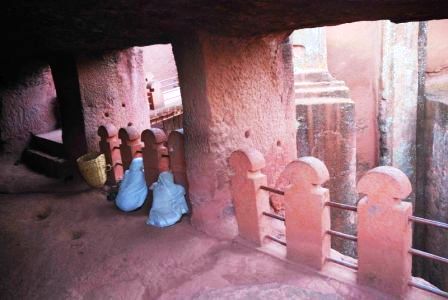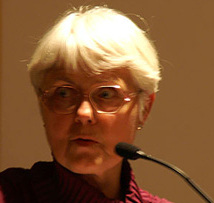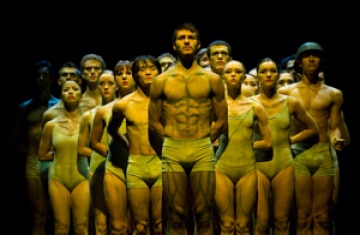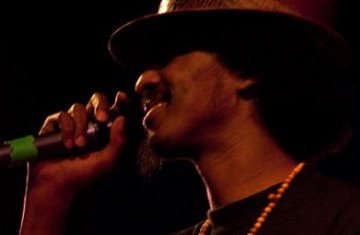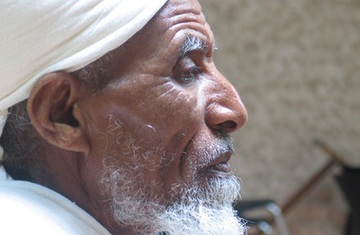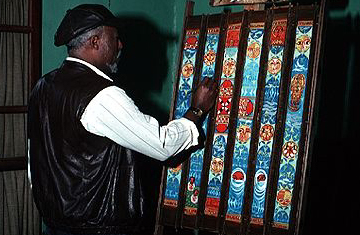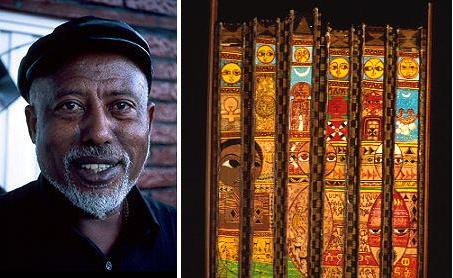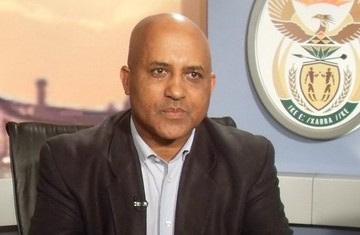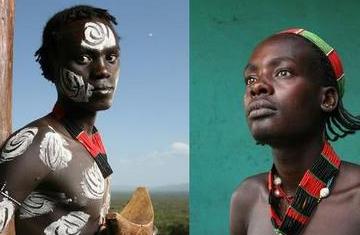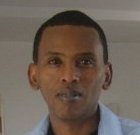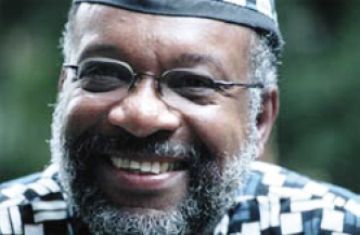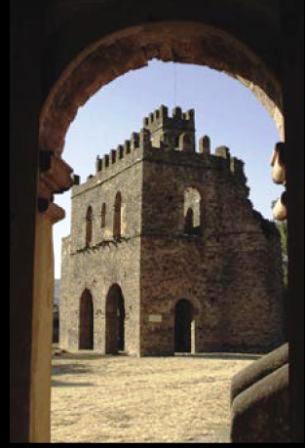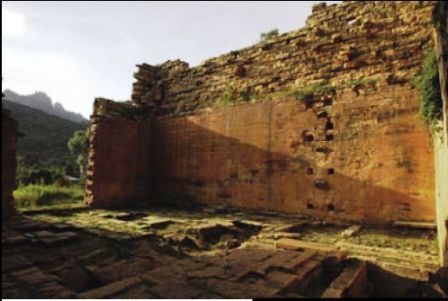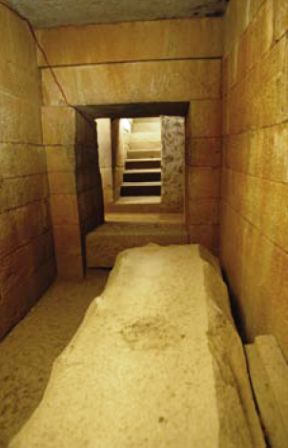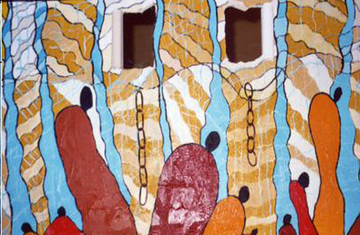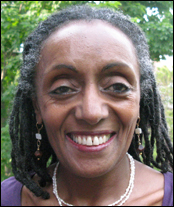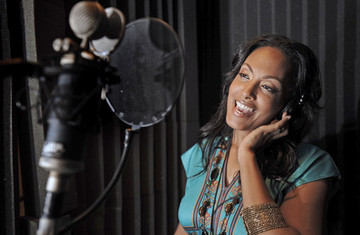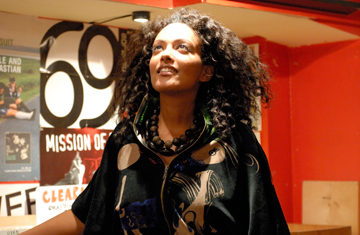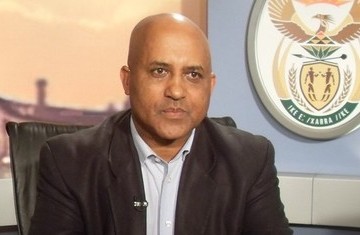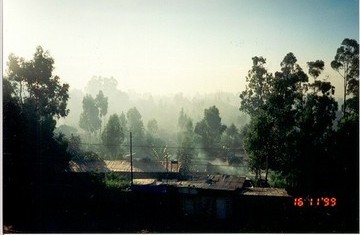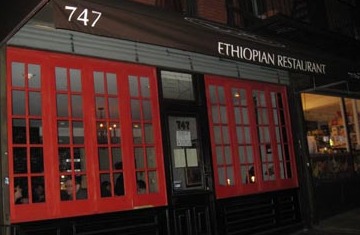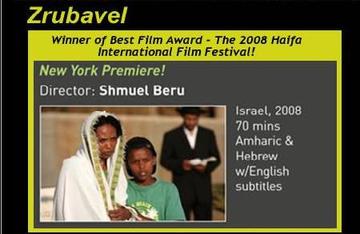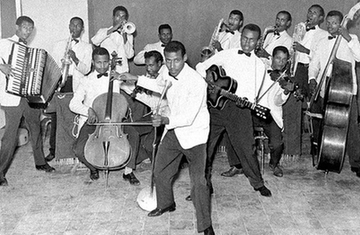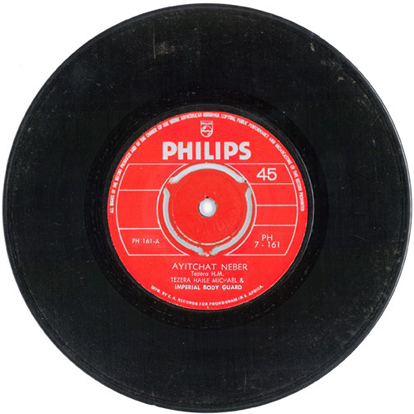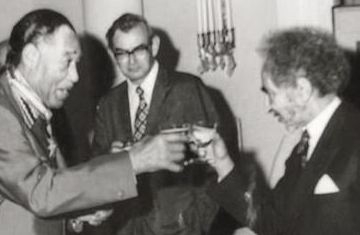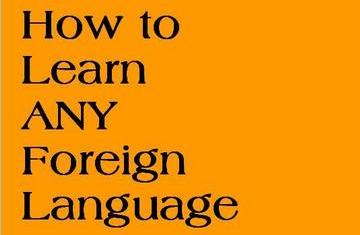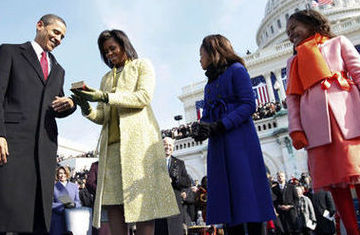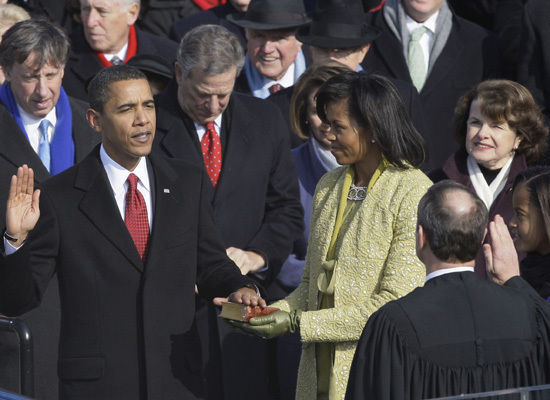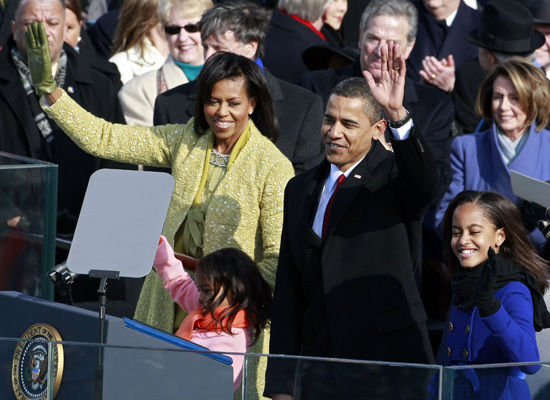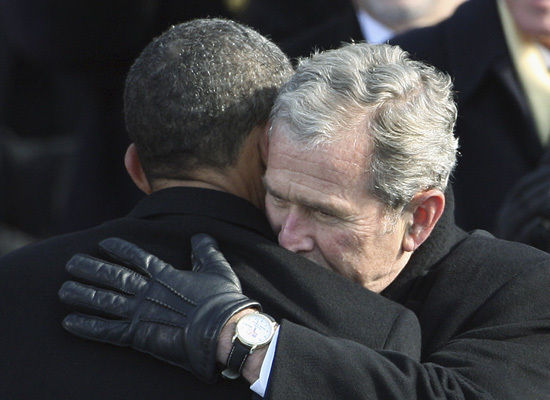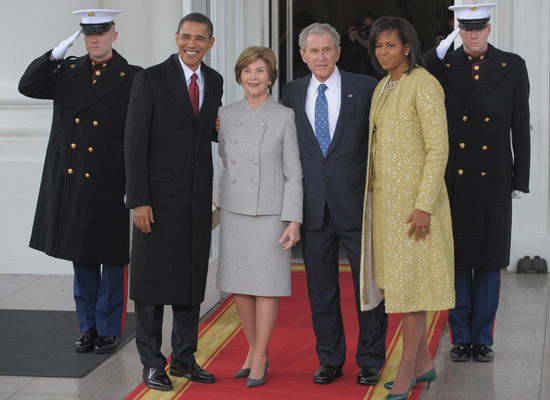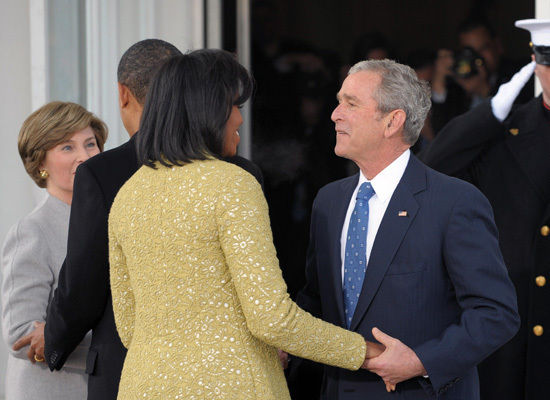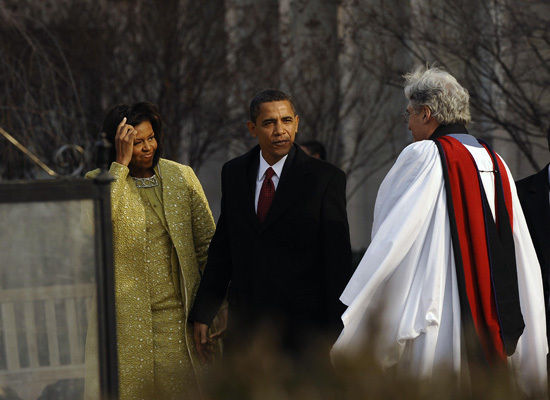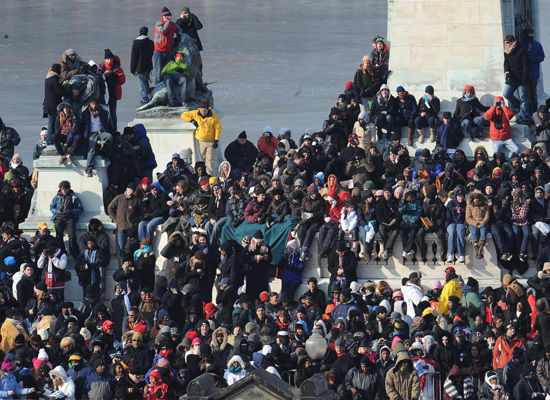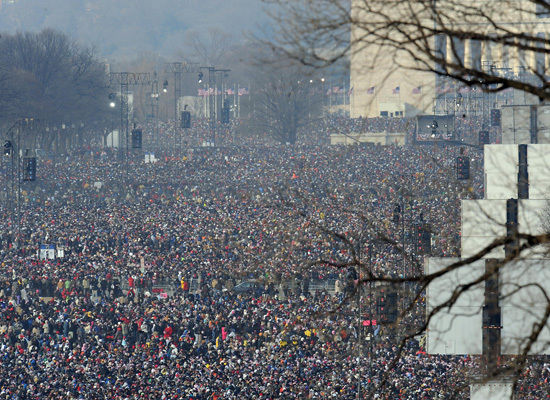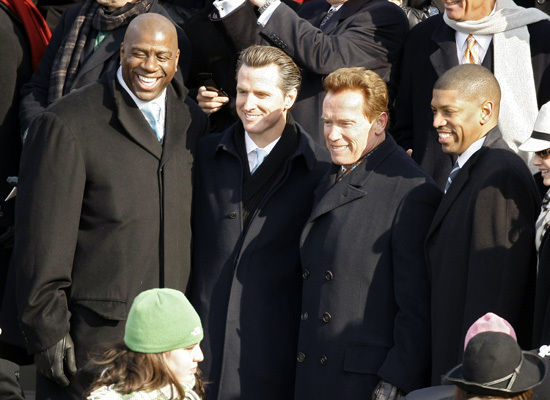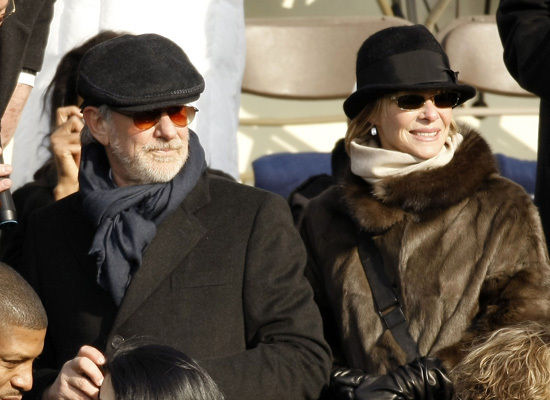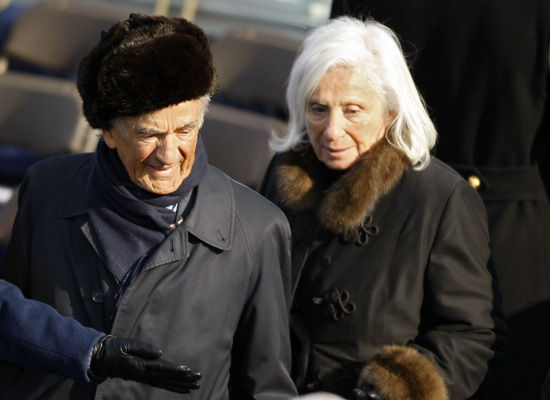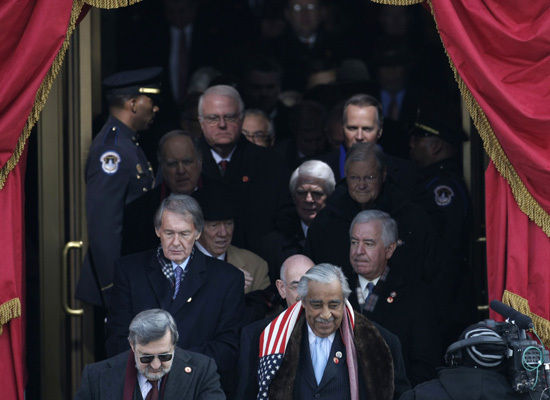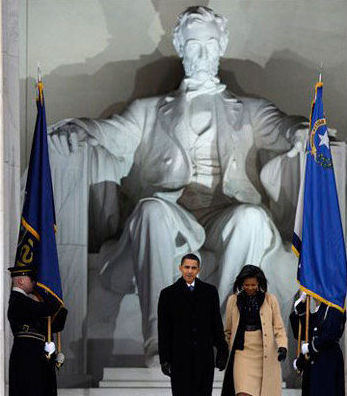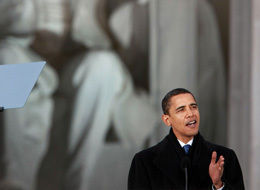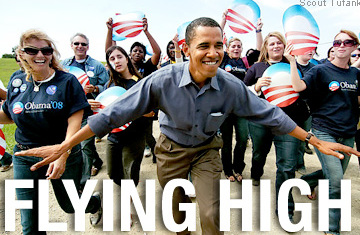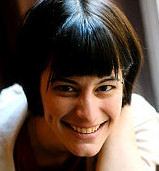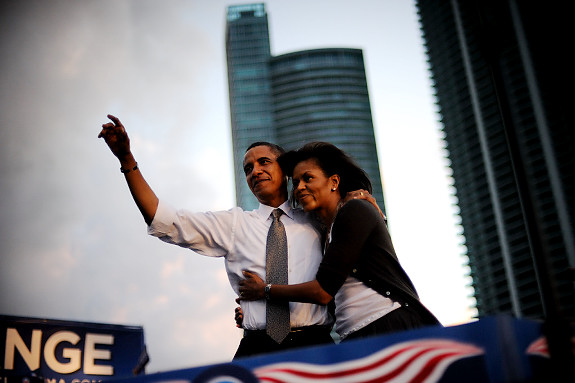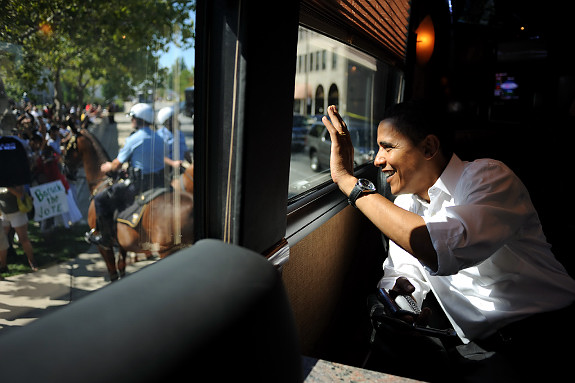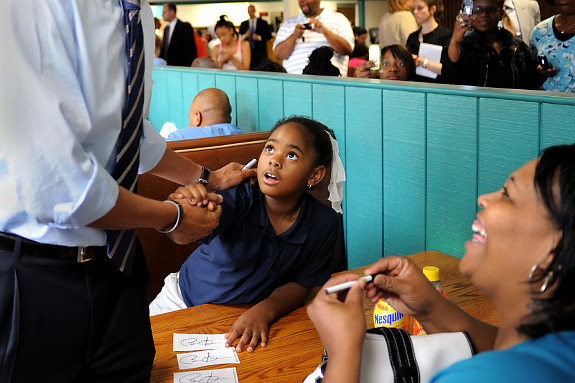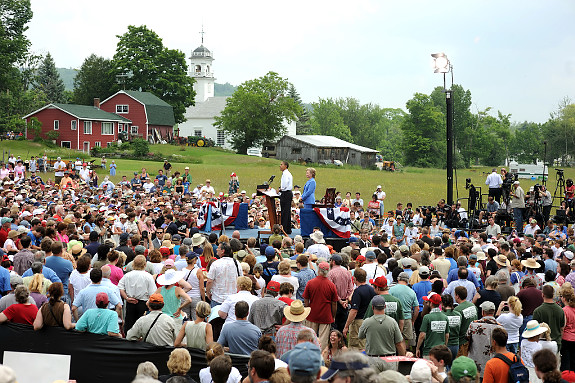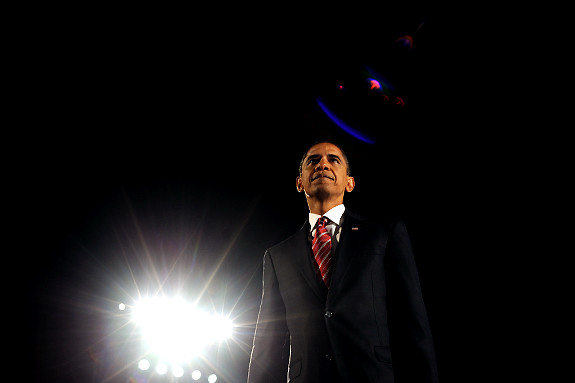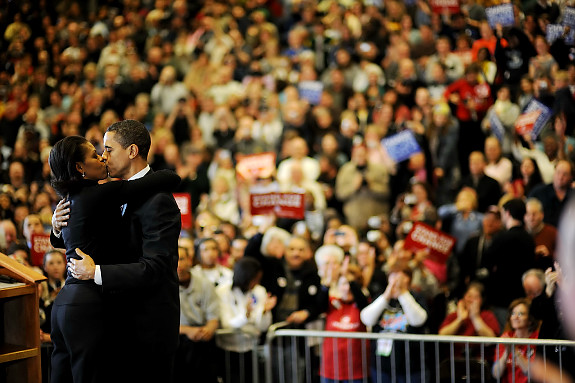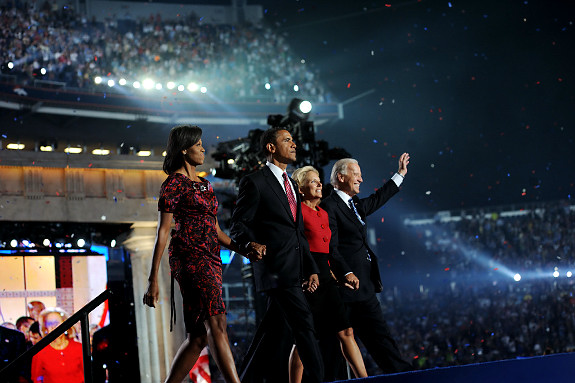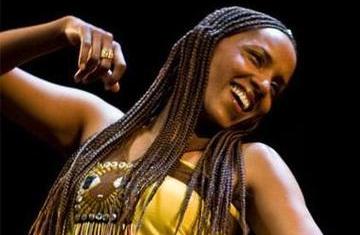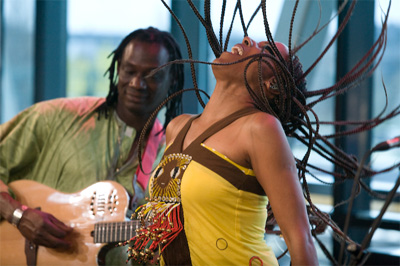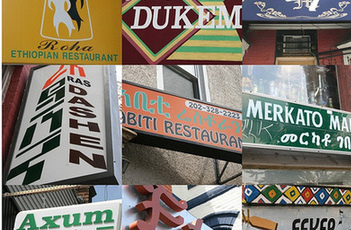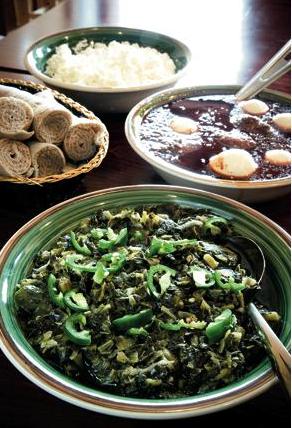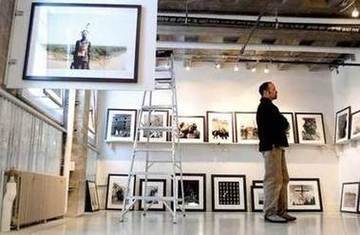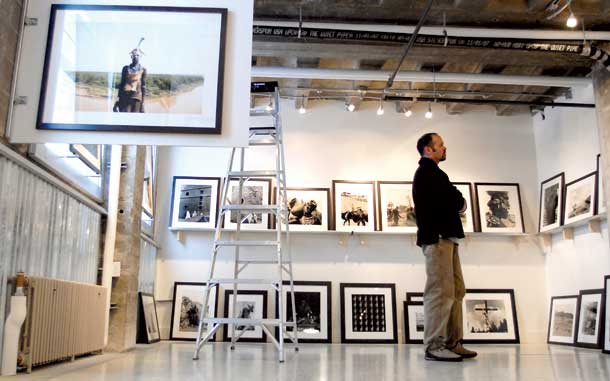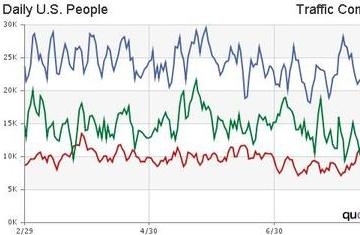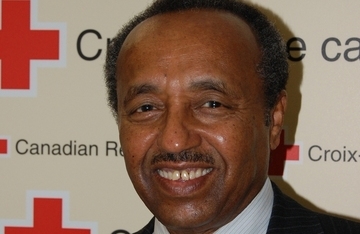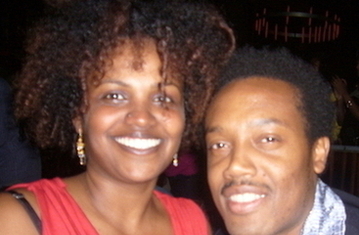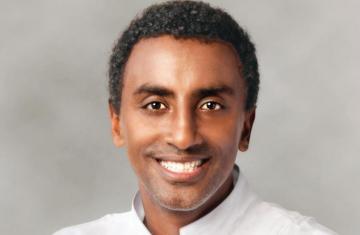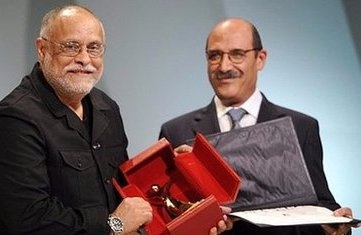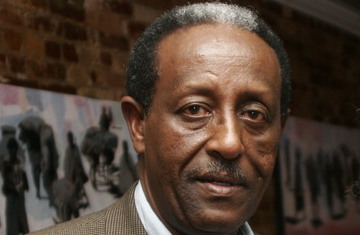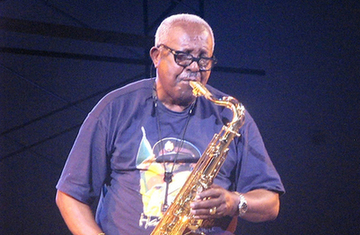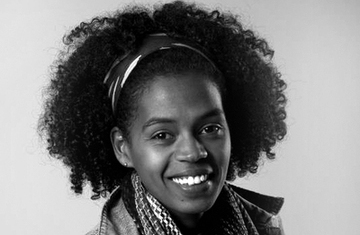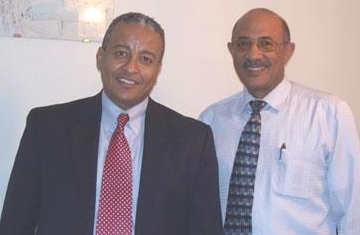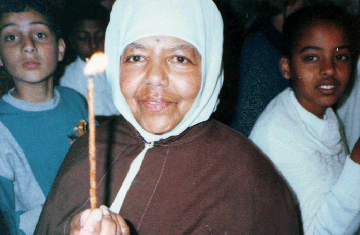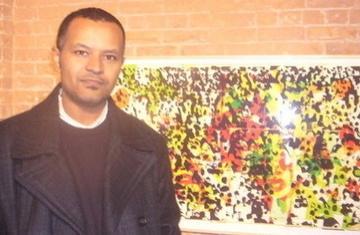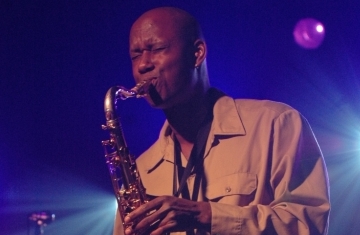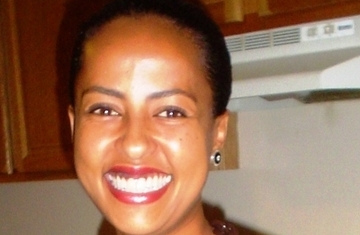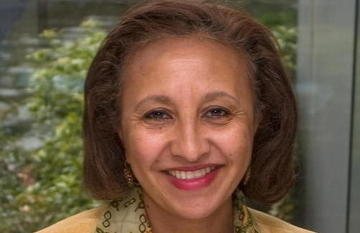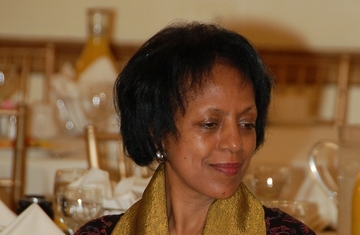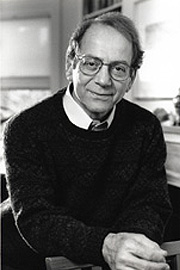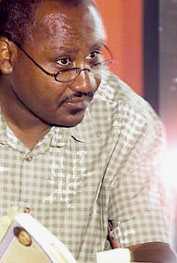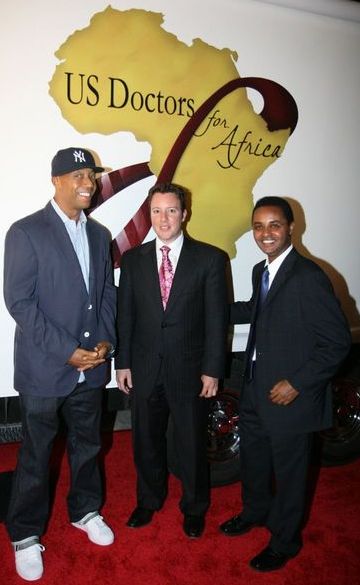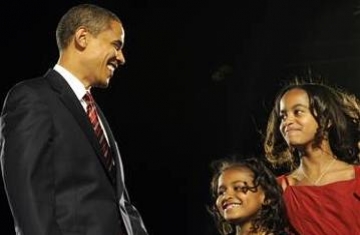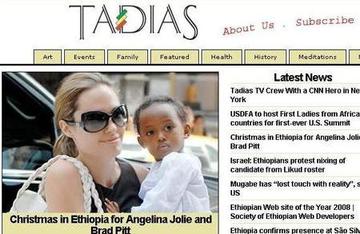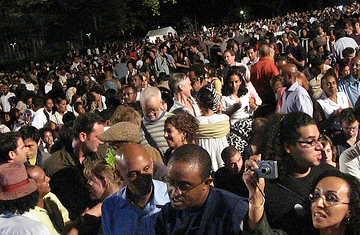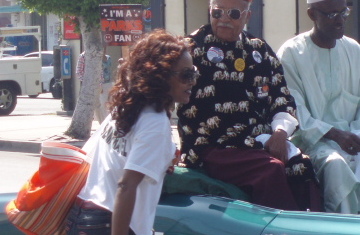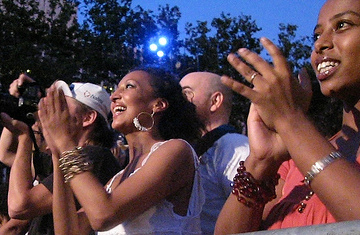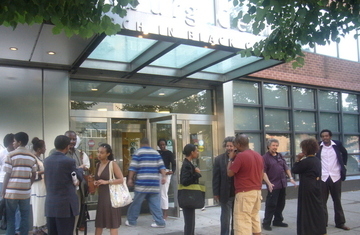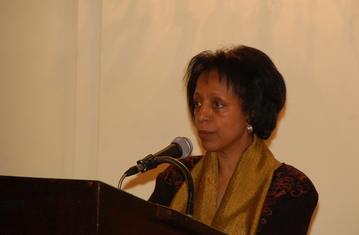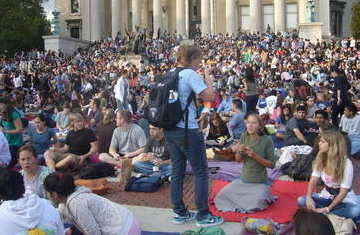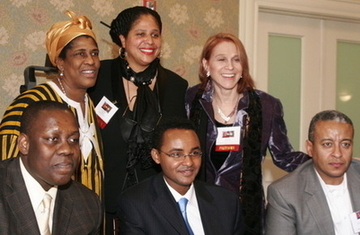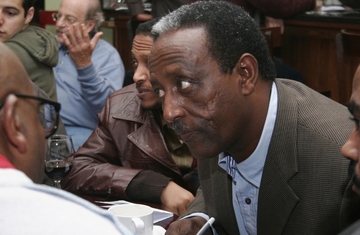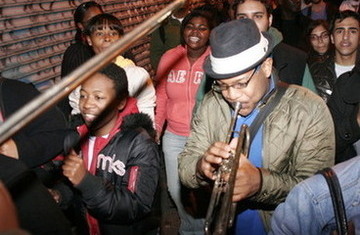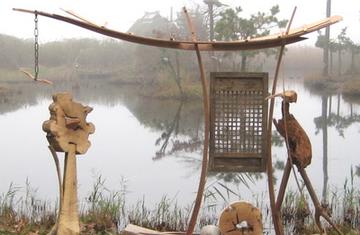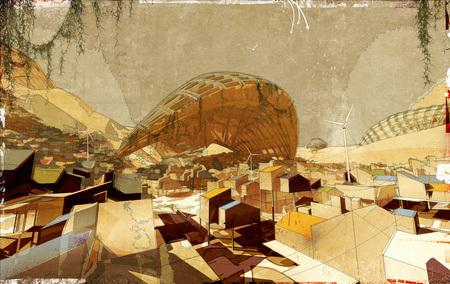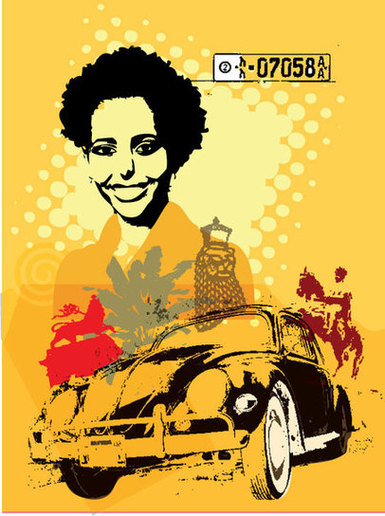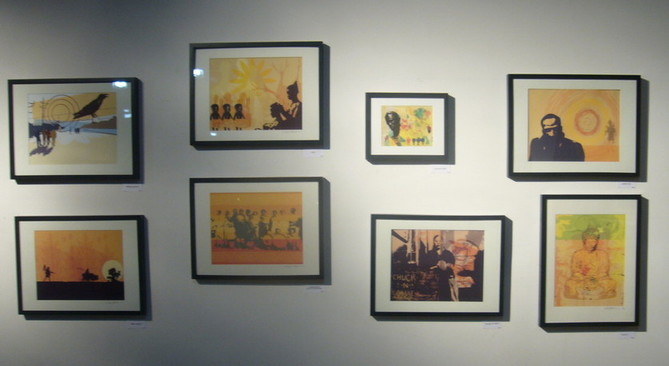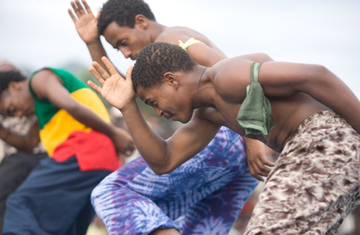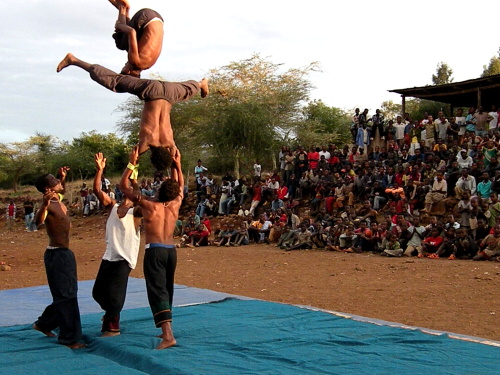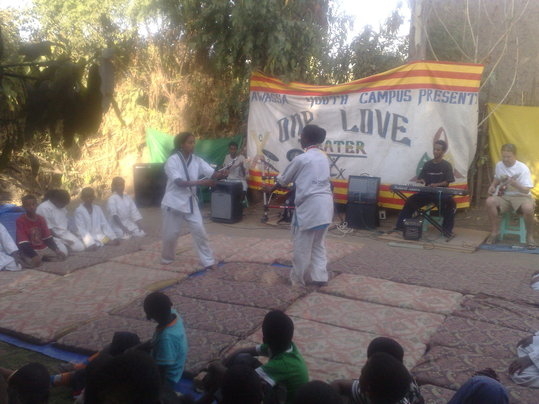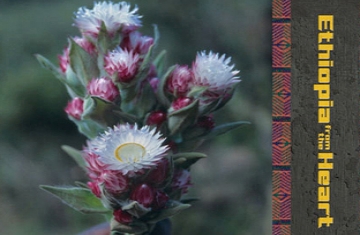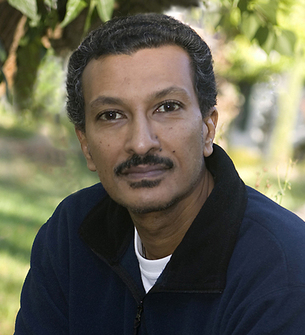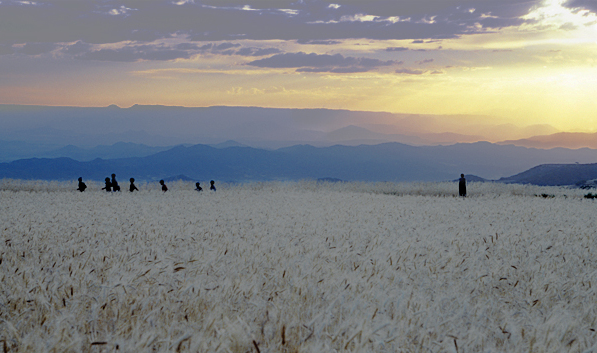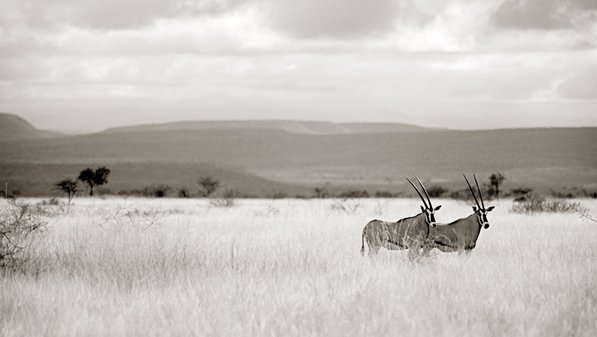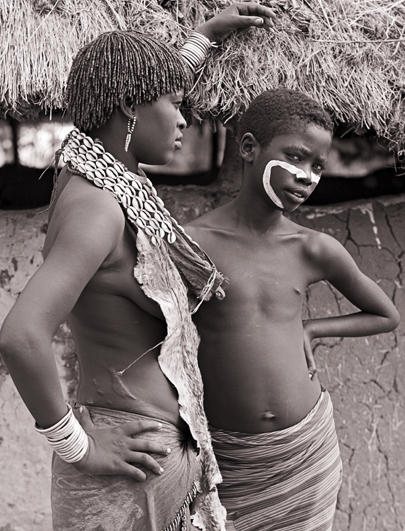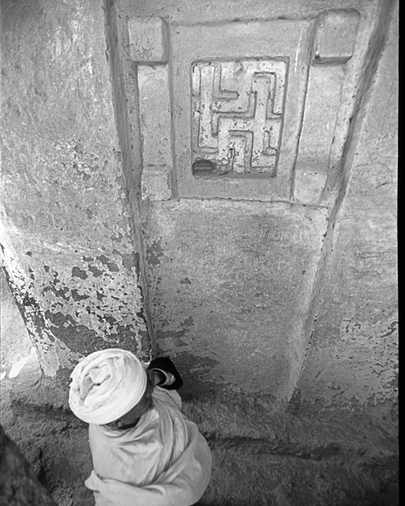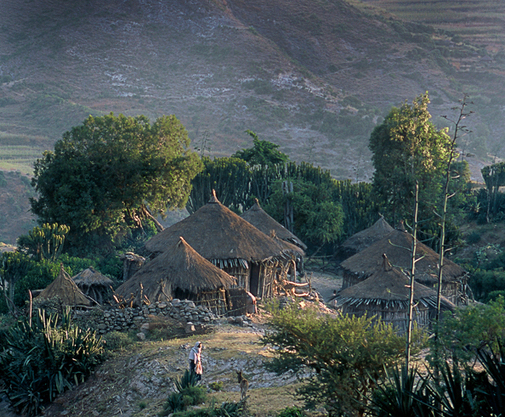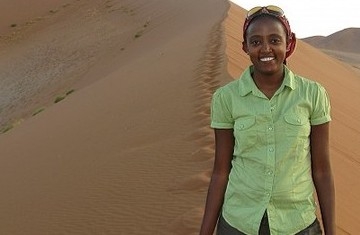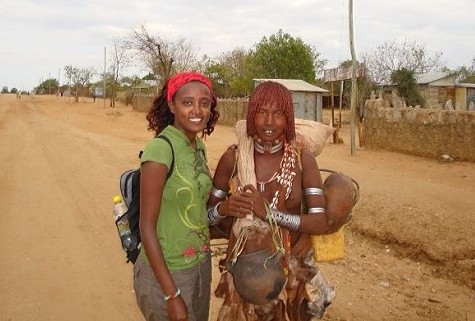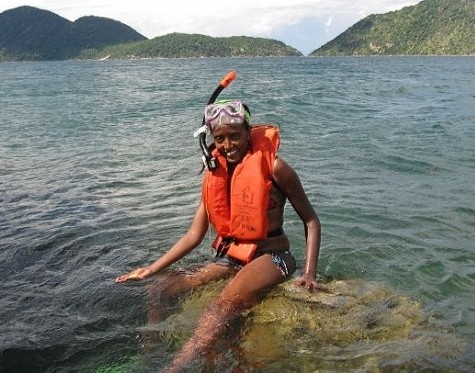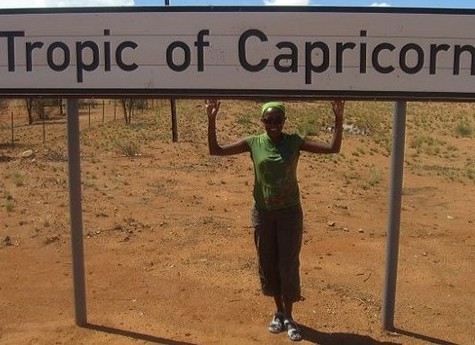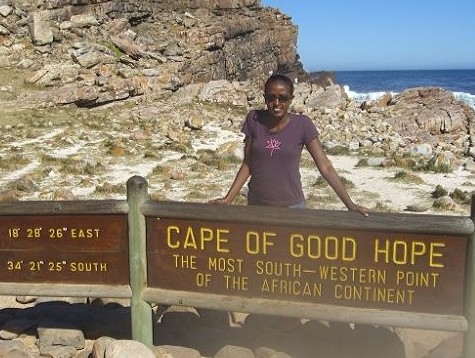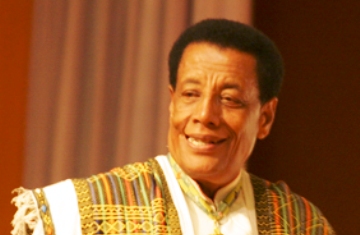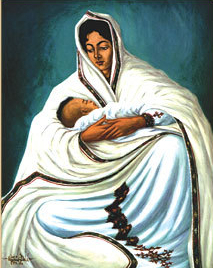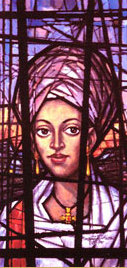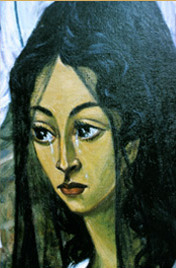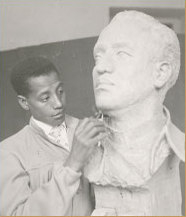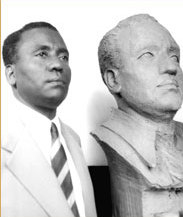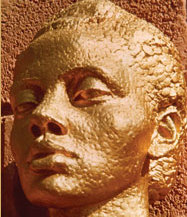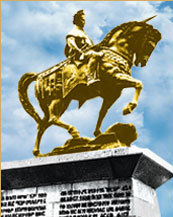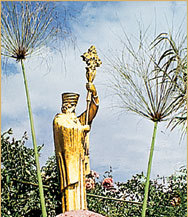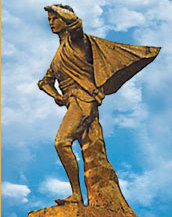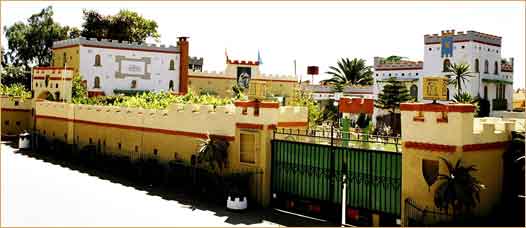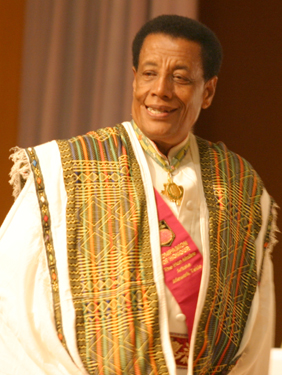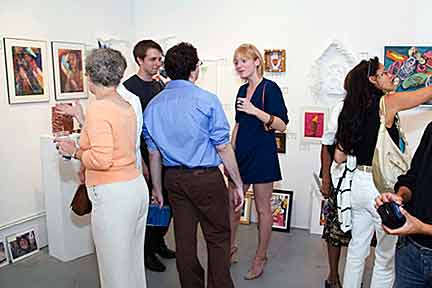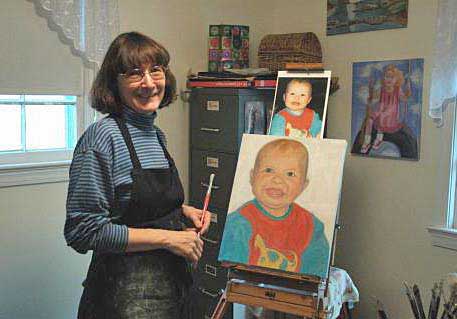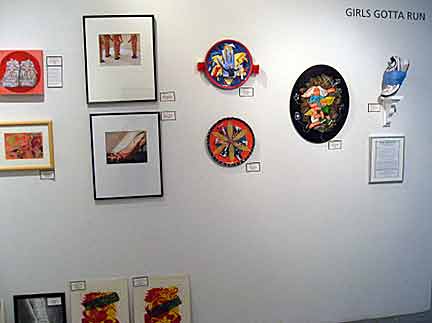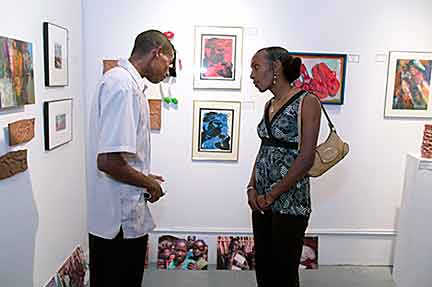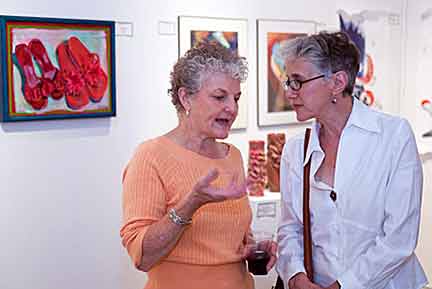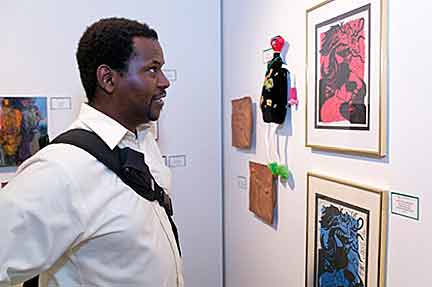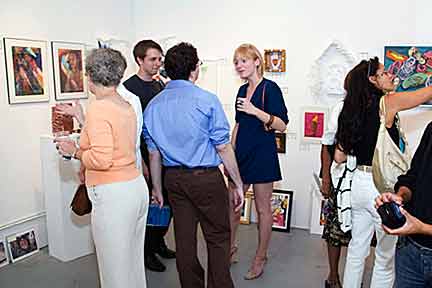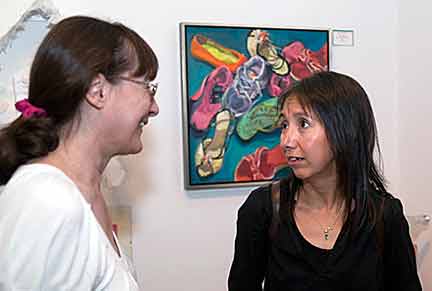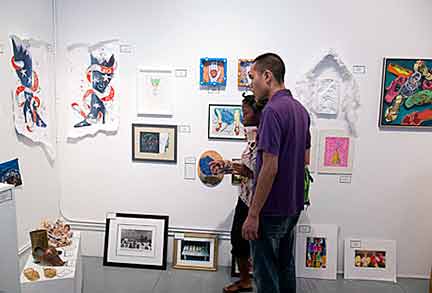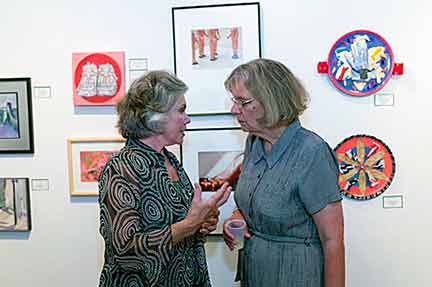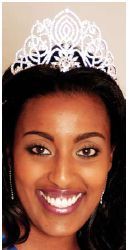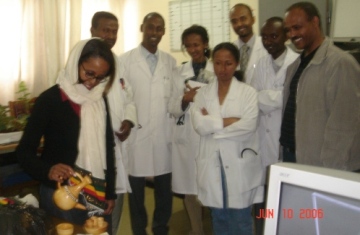
Editor’s Note:
Wednesday, October 1, 2008
New York (Tadias) – Ethiopian-born Sosena Kebede (pictured above left) served as an Assistant Professor of Internal Medicine at Hanover Regional Medical Center until April 2006. She spent her childhood in Ethiopia, Tanzania, and Botswana before settling in the United States in 1988. She holds a B.S. from Duke University, and an M.D. from the University of North Carolina. Dr. Sosena spent five weeks volunteering at Tikur Anbessa (Black Lion) Hospital in Addis Ababa in the spring of 2006. The following is an excerpt of her memoir (first published on Tadias Magazine in 2007) that details her personal experience at one of the largest health care facilities in Ethiopia.
We hope Dr. Sosena’s observations will spark a healthy debate on the subject and hopefully the discussion will focus on finding solutions . As always, we warmly welcome your comments.
A Doctor’s Memoir
By Sosena Kebede
May 3, 2006
So I woke up at 8:45am after going to bed at 11:00pm last night and I reported to duty at Tikur Anbessa Hospital (hereto referred to as TAH).
The hospital is run down, there is barely enough lighting to see your way in the hallways, the wards reek of a mixture of antiseptics, body odors, and whatever else. Medical equipments are scarce, outdated and in some cases out of commission.
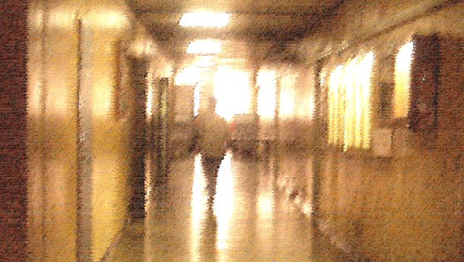
Above: There is barely enough lighting to see your way in the hallways.
Photography by Sosena Kebede
The Out patient Clinic (OPD) is mainly run by resident physicians. Consultants usually see subspecialty patients and are available for consultations. Patient rights including a right to privacy or modesty is barely existent. Patients are examined in a semi-office type room with one stretcher in the room. There is no gown, no privacy in that small room. Patients have to undress in the full view of the doctor and the nurse as well as who ever else may be around at the time in that small room. (Oh, the cell phone of the doctors rings at times in the middle of exams and the doctor interrupts the exam while the patient is lying half naked and talks on the phone. Later on, I found out that the cell phone is used as a pager equivalent in this hospital so to be fair most calls seem to be work related). What topped my experience today was when the examining physician at one time literally pinched an older woman’s pendulous left breast by the nipple and raised the whole breast up in the air like a tent while listening to her heart! I was mortified, and I so badly wanted to slap his hand off of her.
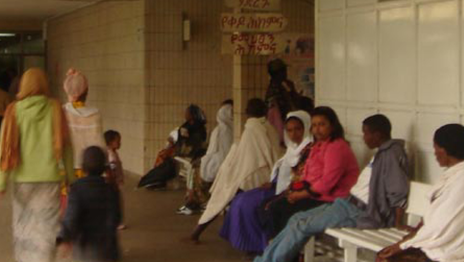
Above: The Out patient Clinic (OPD). Photography by Sosena Kebede.
Because not all patients can be seen by a consultant some complicated cases are seen by residents alone which made me feel uncomfortable to say the least. Today, one of the residents came to ask the cardiologist’s opinion on how to manage an elderly gentleman who apparently is in third degree heart block intermittently (A heart conduction abnormality that can be fatal). There is no pacer (a pacer, as the name implies, is a device used to” pace” the heart when its intrinsic ability to pace its own rhythm fails) and the gentleman declined admission for monitoring purposes citing financial reasons. It turned out that he couldn’t afford any medications either. Decision was made to send him out and have him come back in three weeks!! Wow. I felt helpless; as I am sure these physicians have million times over. I gave the old man some money for medications. He kissed my hands and I walked out chocked up, knowing that he is one of many, and one couldn’t possibly help all… I saw the physicians exchange glances as I walked out. Perhaps they were amused by what they perceived to be a naïve gesture on my part. Perhaps, they thought here is another American trying to be a hero.
Clearly the volume and the acuity of care is way above what these exhausted and frustrated physicians can handle. The system seems to be crumbling and I wondered how they make it day to day, patients and physicians alike.
At the end of a long day, I stood looking outside the window on 8th floor while waiting for my ride to go home. I saw a beautiful landscape of Addis. A spectacular chain of mountains cradle rows of shacks and rusty tin roofs. The high rises that pop their heads above the shacks don’t hide the story of this city. This city holds some of the wretched of this world.
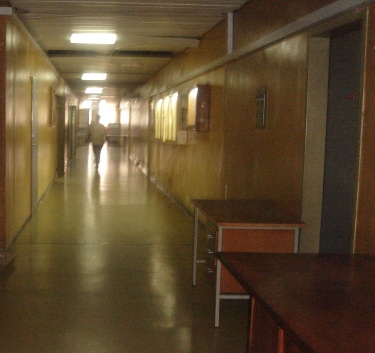
Above: 8th floor offices. Photography by Sosena Kebede.
May 4, 2006
I attended grand rounds today and was once again impressed by the quality and clarity of presentation and the professional attitudes of the residents and even more impressed by how bright they are as demonstrated by their wide differential diagnoses. I sat at the back of the conference room proud to call them my people. I don’t think my residents in America with all the information excess at their fingertips and a lot of spoon feeding could generate as much differential and show such insight into disease processes as these residents.
In the department of Internal medicine, there is one lap top and LCD projector that is kept in the main office but the residents use overhead slides for their presentations. The screen for projection is torn at the corner and is held by a wide masking tape and creates an indentation on some of the hand written words that project on its surface. I struggled to read their hand written presentation but I preferred to listen to them anyway, so it didn’t matter.
Diagnostic modalities such as CTs and echos are hard to come by. The hospital does not have an MR. The single CT scanner the hospital has, I am told is broken and has been so for the last 12 months! Patients who require CTs will have to go to private clinics to get them done. With a prohibitive cost for these diagnostic procedures most patients who need them can’t get them.
The physicians here work under some of the most emotionally devastating circumstances, with very little reward and no job satisfaction whatsoever. I found out that every physician now works at a private clinic to supplement their income at the government hospital. This includes the resident physicians as well.
There is no heart hard enough and a mind so callus that it can’t feel pain, outrage, disbelief, and despair at what I am seeing in Ethiopia.
Out of the many sad cases here are a couple that I will probably never forget. We saw a 20 some year old male who came to the cardiology clinic for follow-up of his cyanotic heart disease. He was born with “a hole in his heart” and because of this defect the oxygenated and deoxygenated blood mix and gives patients such as this one “cyanosis”( bluish hue to their coloring), which is one of the hallmarks of low oxygen in the blood. During this visit, the patient is told to continue taking his medications (which will not fix the problem!) and “try and pursue his chance to go abroad to get definitive treatment”. The only way to cure this type of defect is by surgical method and that is not available in Ethiopia. Of course this young man, who is a college student can’t go abroad and he will die here. I wondered what he is studying and how long he will stay alive. Ethiopia’s life expectancy is about 43 years of age, I don’t think he will make it that far.
An 18 year old girl who looks not a day older than 13 (she is severely malnourished) came with her dad for follow-up of her shortness of breath and trouble lying flat. During physical exam her heart looked like it’d pop out between her left sided rib spaces and you barely have to put your stethoscope on her chest to hear the loud booming murmur (a heart murmur is a sound made as blood rushes out of the heart chambers via its valves and can be a sign of heart valve problems). She had distended neck veins and is breathing heavy. This girl has a very sick heart, and you didn’t need to be a doctor to see that. I saw her echo live and the cardiologist, (who is clearly very bright and in my opinion second to none) pointed out the girl’s massively stretched heart chambers and the severe valve leakages. She is clearly a surgical case but he pointed out because of her malnourishment he didn’t think that ENAHPA (Ethiopian North American Health Professionals Association, a group of Ethiopian and non-Ethiopian health professionals from North America that are expected to come mid May to do cardiac surgeries) will consider her to be a good surgical candidate. The girl’s father who accompanied her has sad eyes and didn’t say a word and seems to have no clue as to what is going on with his daughter. The little girl spoke in whispers I could barely hear, and she kept her eyes down cast and continuously wrung her fingers that were folded on her lap. The name and the body frame may change but this case and the whole scenario was déjà vu all over again for me.
There is a frighteningly minimal amount of conversation that goes on between patients/their families and these doctors. The patients and their families who at times travel several kilometers to make it to this hospital are so mishandled starting at the hospital gate all the way to the clinics. Part of this ill-treatment that I perceive (the Amharic word “Mengelatat” I think fits the bill better than any other English term I can come up with) I believe may stem from a general lack-luster “customer service” practice in our culture. Also, my experience has been that harsh words are freely hurled by people in “authority” to people who are perceived to be either inferiors or subordinates in some ways without fear of repercussions. A hospital guard who carries a gun is at liberty to scold a family member of a patient at the hospital gate; as would an older man in car to a female pedestrian, an adult to a child or a physician to a patient, just to name a few. Added to that, the frustrations that come from working under such difficult conditions may make people appear to be heartless. Regardless, it is a sad state of affairs.

Above: B8. Photography by Sosena Kebede.
Today, I felt overwhelmed by all I saw. After work I met with a friend of mine at a café (there is a miracle right there, my good old southern friend from Wilmington North Carolina, now sitting across the table from me in the country of my origin!) and I broke down and cried about this whole package of life in Ethiopia. He cried with me.
May 8, 2006
The residents essentially manage most of the patients. While I rounded on hematology patients with one of the Hematologist, I was impressed by these residents as they discussed the management of leukemias, multiple myelomas etc. They know the chemotherapeutic agent dosages, all the side-effects. They administer and monitor treatment after consultation with the sub specialist. Infectious diseases are plentiful in kind and number in Ethiopia. I had to acquaint myself anew with some of the tropical diseases such as Leishmaniasis and Schistosomaisis etc, which I was once taught in the US as topics of historical significance in the western world.
Before rounds I was listening to a bunch of residents discuss a case of pleural effusion (fluid in the lungs) and its managements. They know what they are talking about and the camaraderie and team play exhibited seems to be far superior to what I have seen in America. I was also very happy to overhear that they do most of the medical procedures and although limited, do have access to ultrasound guided thoracentesis,(a method by which fluid from the lungs is drained using ultrasound guidance). Most of these guys (unfortunately with the exception of two females they are all guys) seem to be highly motivated, after having arrived at this stage of their lives after much trials and tribulations. (Naturally, there are exceptions to the rule). They work under such suboptimal conditions, with very limited support system, and meager educational resources. Their motivation to learn makes me wonder if I will ever want to teach in
America again.
May 10, 2006
I had a very full day today-long rounds and lectures to the residents. What a pleasure though.
I have had some opportunities to mingle with people and form friends in the hospital and outside of it. The recurring theme among physicians and non-physicians is that people in Ethiopia are increasingly being made to abandon intellectual/ academic pursuits for entrepreneurships in order to survive. (There is nothing wrong with entrepreneurship or business if done honestly, but it should not be the only means of existence in a modern society). One young professional couple shared with me how some of their close friends who have only high school education have gone into “business” and are living large, whereas people like them who have invested a significant number of years in education are left to struggle to make ends meet. Their expertise for knowledge transfer and their contribution to pulling Ethiopians out of the dark ages of ignorance seems to be overlooked. The way I see it, Ethiopian intellectuals are given very little incentive to make this country their home.
While discussing this topic with one individual I heard very disturbing news about a parliamentary discussion that was televised recently. Apparently, the prime minister of Ethiopia was discussing with members of the parliament on how Ethiopia can improve its Chat business in the international market. Chat is a marijuana like substance that is grown in Ethiopia and has an addictive and mind altering properties. This recreational drug is now creating a huge problem among the youth and adults alike and is blamed for a significant number of road fatalities especially among long distance truck drivers who drive while under the influence. Everyone can list many bad public policies, but this one defies explanation and borders on insanity.
May 11, 2006
I saw an elderly male carrying an emaciated adolescent kid and walking up the steep hill via the Radio Fana road going to TAH today. Beside him, also was a middle aged guy carrying a plastic bag. I saw them trudging up that steep hill in silence, obviously exhausted from a long journey, and quite clearly unable to afford a taxi fare to bring a sick child to the hospital. I wondered how long they traveled today and where they came from. I wondered what illness the child had and what other “mengelatat” (harassment) awaits them starting at the TAH gate. I wondered when they will eventually be able to see a physician. I also wondered if that child was going to walk out of TAH alive…
I see many elderly and sick people climbing the stairs at TAH all the way up to the 8th floor because the only one functioning elevator (that sometimes fails to function) is reserved for those who are severely sick such as those who require stretchers. I helped carry a heavy bag for a lady walking up the stairs this afternoon. She was very happy to share the burden and was talking to me in between halting breaths until one of the ladies who works in house keeping on 5th floor addressed me as “doctor”. At that point, the lady I was climbing the stairs with took the plastic bag I was helping carry from my hands, thanked me profusely and went her way, without even giving me a chance to say that it was no big deal.
I also see rows of people sitting on the benches and on the floors of the hospital waiting for their turns to see a doctor. Some look like they need to be in ICU immediately. Not that the medical ICU which has 4 beds and the most rudimentary cardiac monitors and not much else, will avail much of anything, but at least they will be in a bed of some sort. From what I gathered there are only two mechanical ventilators in the ICU; there are two “crash carts” (carts that hold emergency medications and defibrillators in the event of cardiopulmonary arrest)-one in the ICU the other in the OPD area. Emergency medications are not always available, therefore medical emergencies in general have a predictable dismal outcome.
During lunch break today a very soft spoken and pleasant laboratory technician was talking about how tuition for her daughter has increased by 50% and she and her husband don’t know how they are going to be able to keep their only child in the same school. Everywhere I turn I hear “sekoka” (woes). Sometimes it is almost impossible to comprehend this level of social devastation in one country. The poor have clearly grown poorer over the past decade or two, and the minority of “middle class” are frantically struggling not to join others into the quick sand of poverty. There is wide spread sense of hopelessness and dejection in people of all ages, and gender. People are preoccupied with trying to figure out how they can make it from one day to another.
I talk about misery sitting in an upscale café/bookstore, eating grilled veggie sandwich, drinking green tea, and working on my lap top. I have my palm pilot and cell phone on the table, both very much operational and invaluable even here in Ethiopia. On the bottom floor of this beautiful contemporary café called Lime Tree café is a snazzy day spa called “Boston Day Spa, Where luxury and Glamour Meet”. I am very comfortable. When I am done writing this piece I will walk across the street of Bole, where rows of internet cafes, pastry shops, high end boutiques and shiny high rises are lined up. I might as well be in America. I will eventually walk into a two storey beautiful house where the maids will wait on me. Now that is much better than I have it in America. This is what I call the “artificial” life of Addis Ababa. This is a life that only a very small minority of Ethiopians live.
Many things annoy me even infuriate me, but none like people who measure developmental advances of the country using these “artificial” methods. Rome was not built in a day, and nor will Ethiopia be. I am not against road constructions and the erection of high rises. I am not necessarily against the SUV driving, designer clothing wearing, Sheraton Hotel partying, Europe vacationing crowds. I am however against those who use this minute fraction of the reality in Ethiopia to measure “development”. I am against complacency and indifference to the pressing issues of basic human needs food, shelter, clothing, health care, education and safety to all the people of Ethiopia.
May 12th 2006
There were four successive bomb blasts in Addis today. One was close to TAH and it occurred while I was giving a lecture on Sub acute Bacterial Endocarditis to the medical students. Everyone looked pretty unmoved by the whole thing and outside the building it was business as usual. People on the street either talked about something entirely different, or they casually made comments about how they believe the government itself is responsible for these blasts. Two of the four blasts happened in a taxi and a bus (I could very well have been in one of those taxis), and a total of four people died with over 20 injured, some very seriously. Waiting for a taxi to go home right after the blast I saw a group of people sitting at a café near Ambassador Hotel having a good old time. The thought that came to mind was that Ethiopians have become accustomed to death and dying of all forms including terrorist killings that they carry on their lives pretty much how the Israelis and the Palestinians must carry on. Just when I thought it couldn’t possibly get any worse…!!
May 15, 2006
I keep fairly busy at TAH, and I am enjoying getting to know people a little bit better everyday. One of the physicians asked me today why I wanted to come to Ethiopia to work. This is a well seasoned physician that has served in the institution for a long time and I think he wanted to know if I knew what I would be getting myself into. I know that Ethiopia’s problems are complex and individual efforts may be miniscule but if there is enough of us I believe the scale will eventually tip. The scale may not tip in my life time but I am willing to leave my “negligible” contribution on the offering plate.
It is easy to get overwhelmed by all that is wrong around here, but in my simplistic personal view, there is still a lot of untapped sources. These sources are easy to miss because they are not big and they don’t leave visible dents on the surface of our problems, and they certainly don’t make the headlines. Most of these sources are also not measured in monetary in kind, and thus may appear not to be that valuable. I am thinking of the power of compassion that moves us to own the pain and suffering of others and make it our own. I am thinking of daily acts of simple kindness at individual levels. I am thinking of touching other human beings, both literally and figuratively. During rounds I made sure I laid my hands on each patient and addressed them by their names. I also always asked the patients and their families if they had any questions before we left their bedside. I made it my business to communicate to them by words, attitudes and actions that their issues concern me and they matter to me. Two days ago, the father of a 15 year girl with leukemia shook my hand and said to me in Oromiffa (was translated to me by one of the residents who speaks the language) that for them to” be touched by a doctor is like medicine itself ‘.
I will always remember what someone said to me: “People don’t care how much you know until they know how much you care”. If the students and the residents I worked with this month will remember only this piece of advice my time with them has been worth it.
Talking of simple kind acts, today’s was a special one. I was leaving TAH when a woman asked me where the “cherer kifle” (radiation room) was. Of course I didn’t know where it was but since she and a young man are bringing a very sick elderly woman who could barely walk, (she was moaning and looked like she was about to collapse), I offered to investigate for them. Once I found out it was on 2nd floor, they asked if the “lift” (elevator) will automatically stop on the floor, apparently it was their first time to take an elevator. I took the elevator with them and walked them to radiation oncology and gave their chart to the nurse and inquired for them when they will be seen. There are no wheel chairs, no hospital staff that help triage these sickly patients. The radiation/oncology area it turned out was quite a walk and I kept looking behind me at the sick woman and the man supporting her and said words of encouragement such as “Ayezwot desrsenale” (loosely translated: hang in there, we are almost there”). After we arrived in the radiation room the elderly lady sat on the bench she took my hand and kissed it (for the second time in 10 days, and it brought tears to my eyes. Such deep gratitude, for such a small act…) and said some of the most beautiful merekat (blessings) to me. The one that stood out the most was “Enkifat enkwan ayemtash” (“may you not even stumble”). I loved hearing that. I bowed my head several times, in acknowledgement, Ethiopian style, and said my Amens to all the blessings. It touched me so much, that it surprised me. In a land where verbal cursing is not uncommon it is good to hear a torrent of blessing for a change.
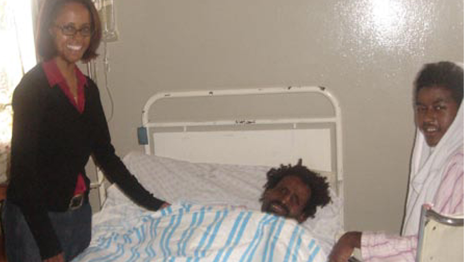
Above: With one of my favorite patients. Photography by Sosena Kebede.
June 16, 2006
I was rushing out through the OPD gate to meet someone for lunch when I run into one of the residents I know. We talked about what it is like to work and live in Ethiopia as a physician. My conversations with the same physician although not entirely based on a new theme gave me a reinforcement of what most intellectuals/professionals in this country are feeling. He told me that his salary rated among the highest but for a family of seven (five kids and a wife) it will be sufficient for two weeks only. Like many others he is also supplementing his income with a second job in the form of a private clinic work. He recounted that once upon a time, he too had great aspirations and dreams to bring about a change in the society. He told me after several episodes of banging his head against a brick wall he has decided to lead a quite life and support his family. This physician, who is soft spoken and accomplished, like many others has contributed a lot to that institution and to the country at large. How many peoples’ dreams and visions have died, I wondered.
I am reminded of the Biblical verse that says “a small yeast will leaven up an entire dough”. This is true of good as well as bad influence (“leaven”). I do believe, that though we might not see this happen in our generation, if we are determined we can be the leaven, the catalyst, to bring about a paradigm shift in this country. We can be the catalysts who will initiate the process of change from the cycles of poverty to self sufficiency.
I was very fortunate and truly feel honored to have met so many people that have done so much and have the potential to do so much more in Ethiopia. Some are tired, others are tiring out. That is why we need reinforcements to be deployed to them. With all the apprehensions that I feel at times, I can’t wait till I go back to Ethiopia. One of my self assigned missions now is to recruit as many as are willing to be part of that reinforcement.
